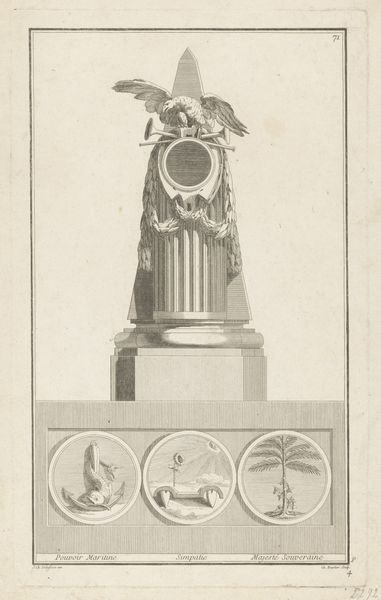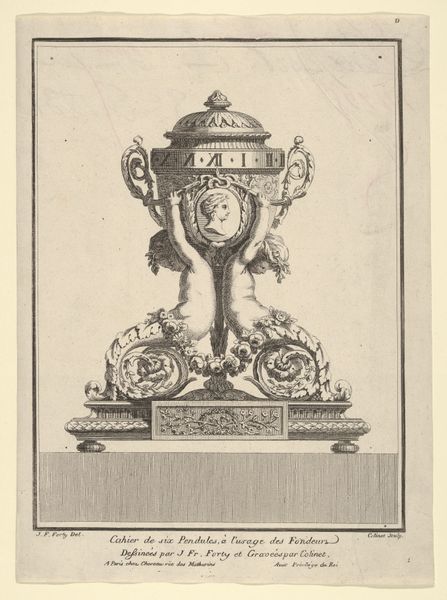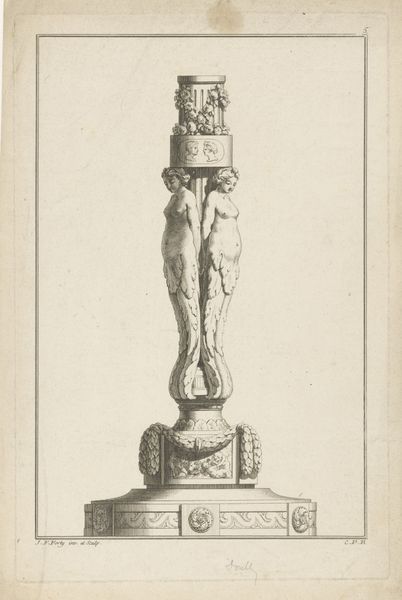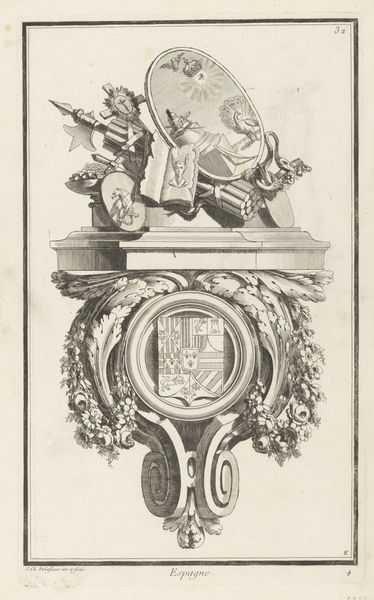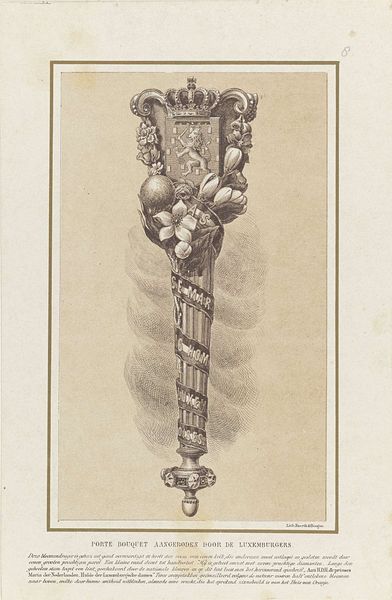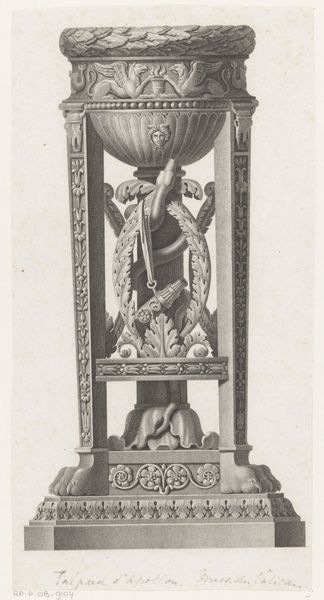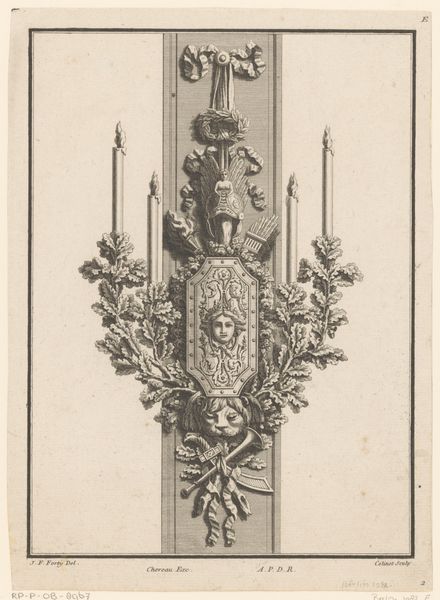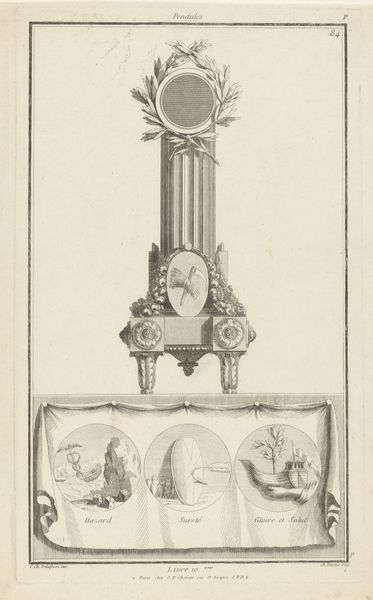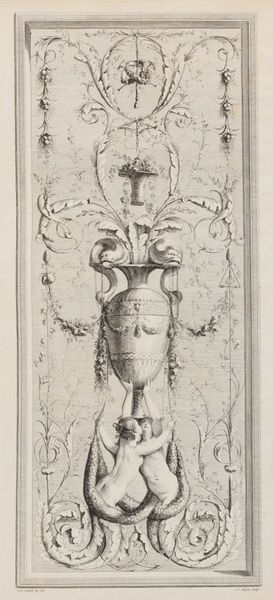
print, engraving
#
neoclacissism
#
allegory
# print
#
form
#
line
#
history-painting
#
decorative-art
#
engraving
Dimensions: height 380 mm, width 230 mm
Copyright: Rijks Museum: Open Domain
Jean Charles Delafosse created this print, titled "Polygamie en goede trouw," sometime in the 18th century, rendered with etching. The incised lines of this intaglio print, are made by drawing into a prepared ground on a metal plate, which is then etched with acid. It’s a relatively quick way to create a design, and suited Delafosse’s trade as a designer of architectural ornament. The texture of the print – so different from a drawing or painting – gives it a crisp, authoritative quality. This print speaks volumes about the labor and social context in which it was made. The clean lines and classical motifs reflect a desire for order and refinement, typical of the Enlightenment era. Yet, the very process of etching, with its reliance on skilled craftsmanship and mechanical reproduction, points to the changing landscape of artistic production and the rise of consumer culture. Ultimately, understanding the materials and making of this print allows us to see it not just as a decorative object, but as a reflection of the complex social forces at play in 18th-century Europe.
Comments
No comments
Be the first to comment and join the conversation on the ultimate creative platform.

